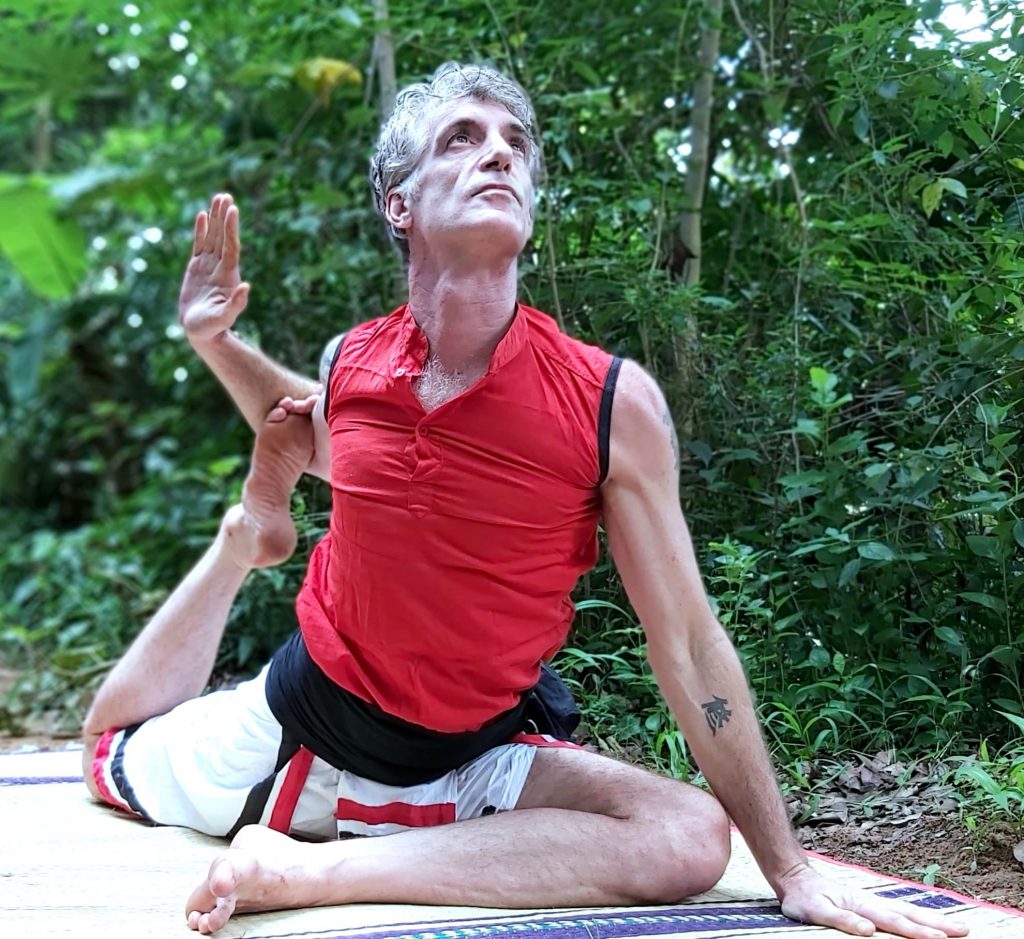
YOGA
Unity is Yoga and Yoga means Unity

The word yog(a) comes from the root word Yug meaning to unite, to yolk (as in the Ox to the plow). To unite, one must remove separation or division known to most of us as duality. It is the nature of our perception, through the use of our senses, to have the impression that the things and people around us are separate from ourselves. Nothing in the universe is separate from the other. This sense of separateness is described by the ancient Rishis as Dvaita (duality), stemming from a concept that everything we perceive with the five senses is illusion (maya). The realization of oneness or non duality (Advaita) is in essence, Yog. Yoga can be experienced as a state of mind or a process. Our experience of the Universe as separate is not incorrect but only a partial awareness of the whole picture. It is illusion, not delusion. Through the process of yog one may experience the “state” of Yog where no separation is experienced. Yoga is not about “doing” but about “being”, it requires no effort to achieve a state of yog, but instead, the release of all effort. It is this constant effort of being something we are not that creates conflict within ourselves.
Traditional Yoga has been tried and tested over thousands of years to help remedy this internal and external conflict. It has been systemized, by the great Yogi Patanjali, among others to give us a step by step process to ultimately achieve the awareness of Yog, of Unity. Known as Samadhi. Patanjali called his system, Ashtanga. Ashta=8 anga=parts. These 8 parts are often described as a great tree with 8 branches, each branch supporting the other. Patanjali’s Ashtanga system is not to be confused (but usually is) to the Ashtanga vinyasa yoga system popularized by Pattabhi Jois.
The Tree of Patanjali Yoga
1st Yoga Branch : YAMAS

YAMAS Also known as Restraints, they are meant to help manifest and foster self-discipline. There are 5 in total:
- Ahimsa | Non-violence. Violence may come in three forms:
a) The obvious form of physical violence
b) The more socially acceptable but equally damaging verbal violence, such as sarcasm; and
c) mental violence, such as wishing someone ill or the taking of dangerous narcotics - Satyama | Truthfulness, in thought, word or deed
- Asteya | Non-stealing
- Brahmacharya | Often thought to mean sexual abstinence it might be more correct to say it is the conservation of the sexual energy. To gain control over one’s sex drive, one must realize, All is Self. When we see ourselves as separate we create tension within, which in turn creates desire, which creates the drive to have sex. This drive is the fundamental spiritual drive to experience All as Self.
- Aparigraha | Non-attachment to the material. This is not a rejection of the material world but an understanding of money’s true value and effective use to free us from the mundane so we may experience the sublime.
2nd Yoga Branch : NIYAMAS

Niyamas are practices used to encourage and nourish the self. There are 5:
- Saucha | Purity of mind, body and speech
- Santosha | Contentment, finding harmony as things are
- .Tapasya | Practice of self-discipline (tapa), using the senses to maximise progress by overcoming our perception of pain and pleasure, comfort and discomfort
- Svadhiyaya | Study, of the sciences to try to understand more about the Universe, of Self
5. Ishvarapranidhanani | Process of identification with the cosmic vibration. To help us move away from ego-consciousness towards cosmic consciousness
The Yamas and Niyamas together form the foundation of yoga practice.
3rd Yoga Branch : HATHA

The poses of yoga. Called asana which means comfortable seat. The inability to be still, in mind and body, is the greatest obstacle to the higher vibrational states.Yoga is the science of stillness. From the Bhagavad Gita, “Yoga chittha vrrithy nirodakaha” means “yoga stills the mind”. These poses have a powerful mental component not readily apparent to the observer which will enable the practitioner to gain mental and physical stability.
4th Yoga Branch : PRANAYAMA

Pranayama is using the breath to expand the energy beyond its illusory restrictions. Branches 1, 2, 3 and 4 are concerned primarily with the external, and branches 5, 6, 7 and 8 with the internal.
5th Branch : PRATYHARA

Pratyhara is withdrawal of the 5 senses. A collecting together of dispersed psychic energies in order to discover greater depths of reality within
6th Branch : DHARANA

It refers to “flow” and the experience of the thoughts and ideas constantly moving through our minds like a river. To rise above these mental disturbances one must fix one’s mind on certain points both internal and external. Dharana maintained for some time becomes Dhyana, which maintained becomes Samadhi.
7th Branch : DHYANA

Dhyana is a continuation of the state of Dharana. When the focus of dharana becomes continuous attention, that is the power of concentration. Dhyana means “entering into”. Once we enter into dhyana we may now suggest qualities we wish to manifest.
8th Branch : SAMADHI

An absolute state of identification and concentration. Samadhi means “complete and absolute”. Through Samadhi we hope to expand our consciousness from the individual self (Atman) to the Universal self (Brahman) to come to the realization, once and for all, that All is Self.


No Comments
Sorry, the comment form is closed at this time.